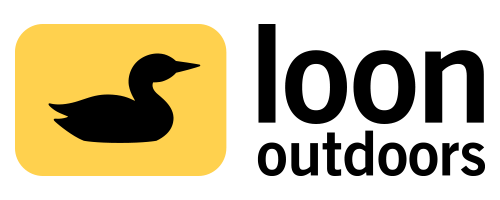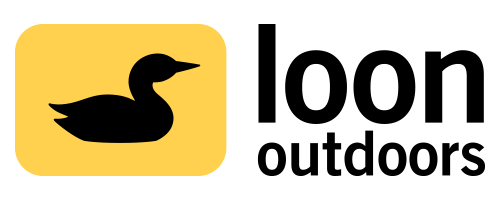Most fly fishers are familiar with the adage about how so much time, blood, money, sweat and effort have been put into fooling an animal with no guile and a brain the size of a pea. As the fly fisher develops, this becomes part of the fun. Lee Wulff intoned that "you know they say at first the fisherman wants to catch all the fish and never can catch enough. Later on, as he becomes more mature in the sport, he wants to catch the biggest fish instead of the most. And finally, when he's a seasoned angler, he wants to catch the tough fish. Those individual fish that are hardest to catch and most challenging.” In a similar vein of thought, I believe that the maturing angler is attracted to the idea of being more in control of the processes developed in order to catch those fish. For instance, most novice anglers couldn’t realistically care less as to what kind of fly they caught their first few fish on. They also don’t usually care much who tied it. To the beginner, fooling a fish and catching it on a fly is all the triumph there is. As they grow in the sport, the nuances, for better or worse, become more clear to them.

In my senior year of college, I vividly remember sitting around a cracked vinyl table with a stolen vise and a few meager tying materials while procrastinating from the burgeoning workload assigned by my professors. The stolen vise, a Christmas present I had gifted my father a year and half before, was a cheap clamp-on job from a tying kit that came with a few odds and ends to tie some of the more common trout flies. I was stubborn, eager and doing well enough in my classes that I could maybe just afford to waste a minute or two here and there. And, as is likely the case with most other beginner tyers, I was hopeless. I didn’t have the patience to throw the already anachronistic DVD into my old Xbox nor the humility to simply Google something like “tying flies for beginners.” So, I busily labored away tying some horrifyingly crude midges, San Juan worms and wooly buggers and wouldn’t you know that if fished long enough, you eventually found a fish either dumb enough to bite or brave enough to take pity on your sad excuse for a fly. There I go, anthropomorphizing and giving them too much credit. But isn’t that the basis of our sport? After all, crediting fish with preternatural abilities gives us the built-in excuse for failure and the reasoning to spend unholy amounts of money on fishing tackle because if the fish are that incredibly advanced, how could you hope to fool them without the best money can buy? Fly fishing is a paradox, an incredibly fun and potentially expensive one. Again, consider the monumental effort and attention that rod makers, fly tyers, writers and countless others spend obsessing about what those beautiful little creatures think about. Those fish? They probably aren’t thinking about much beyond that suspicious shadow that just moved overhead or that tiny bit of flotsam shooting through their feeding lane that just may be a chironomid.
As the angler becomes more knowledgeable in the ways of our sport, they naturally find themselves wanting to test the limits. Those limits may come in the form of their casting abilities, their knowledge of entomology, their athleticism, their ability to catch other species with a fly or in the curiosity and joy that comes from tying a fly and fooling a fish with it. I remember thinking it would be reasonably easy, and, in a way, it really isn’t so hard. But I tie “guide flies”, quick, functional, not terribly inventive but known to catch fish. When I think about the true artists at play in this game though, I again feel like that foolish college student laboring away while procrastinating from his real responsibilities helplessly toying with the black marabou staining his hands. And those early abominations caught fish and sucked me ever deeper into fly fishing like Charybdis swallowing an ancient galley. And now I am pulled even deeper into the abyss with the ability and desire to occasionally harvest some of my own tying materials and take an even more direct hold onto my fly tying and thus my eventual fishing. The funny thing is that this newfound desire is also inherently paradoxical. I catch and release roughly 99% of my catches in the course of the year but the materials I use to tie flies come from animals typically not so lucky as to be released after capture. Funny, right? And again, paradoxical. So after recently experiencing my first ever quail hunt I was privileged the opportunity to tie some soft hackles and small streamers with the feathers of my quarry. And so fly fishing continues to come even more full circle for me.
The truly ingenious and motivated may be fully capable of closing the loop that is their fly fishing. It may be that they are able to ore their own iron, smelting and shaping it into hooks or that they may carve their own hooks from bone. Maybe too they build a sling or atlatl capable of assisting them in bringing down small game. Perhaps they make their own cordage with sinew or from the inner stems of certain plants to tie their furs and feathers to their homemade hooks. Those inventive souls could cut saplings, tie that same cordage to the end and dap their flies into virgin waters with native fish as our forebears did eons before us in hope of tricking those ingenuous creatures. But most of us will fall short of that hyper independent goal ending up somewhere on the spectrum between that and purchasing our flies from the cheapest foreign wholesaler. For me, it’s special to have gained that small new bit of control over my fishing. It helps me understand the cyclical nature of life and the irony of our sport that we harvest animals with fur and feathers to release those with scales. Most of us choose to fly fish not because it is the most efficient way to catch fish but because it is the means of fishing that gives us the greatest connection to nature. So, the more we can leverage our fly fishing to connect us to nature, the richer our link will be. The next opportunity you have to go build a fly rod, tie your own flies or harvest your own materials, I encourage you to take it. You may not create an objectively better fishing tool for yourself but I’m not sure that’s what matters in the end.









